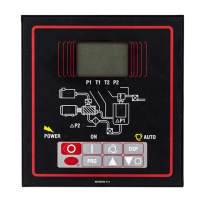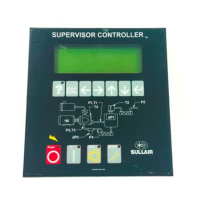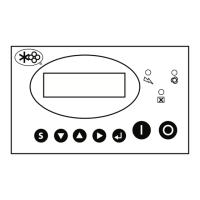Section 6
SUPERVISOR PROTOCOL
22
nected or disconnected at any time.
6.3 RS-485 SERIAL CHANNEL
The half-duplex RS-485 is a party line type channel, ie. any device on the channel may
transmit or receive on the same wires. The transmitters and receivers are differential type
that use two wires and a ground. These have very good noise immunity because the receiv-
er measures the voltage between two signals, and not between a signal and ground (as RS-
232 does). If noise occurs on both lines it will be rejected by the receiver. The ground is
used to keep the receiver from floating too high above the transmitter. A one is transmitted
as 5 volts on the + line and 0 volts on the - line. A zero is 0 volts on the + line and 5 volts on
the - line. The transmitters are tri-state, meaning they can drive the transmission line to a
one (5 volts), zero (0 volts) or be turned off (high impedance). All transmitters except one
must be in tri-state mode, otherwise the transmission will be garbled and damage to the
transmitters can occur.
6.4 TIME SLICING OF THE RS-485 SERIAL CHANNEL
When the sequencing mode is set to HOURS or COM ID# the machines will broadcast their
status (net status message) about once a second. To keep machines from sending mes-
sages simultaneously, time is sliced into periods (up to 17 maximum), one for each machine
and one for a monitor. A machine will only send a net status messages during it’s time slice
(see table below).
T
ime Slot COM ID# Time out
0 Monitor .5 sec
1 1 .125 sec
2 2 .125 sec
3 3 .125 sec
4 4 .125 sec
5 5 .125 sec
6 6 .125 sec
7 7 .125 sec
8 8 .125 sec
The number of time slots is determined by the LAST COM parameter. If the LAST COM
parameter is set to 4 then there will be 5 time slots (0 through 4). One for each machine and
one for the monitor. The time slot for a monitor is longer because it may not be able to
respond as quickly to a message as the Supervisors.
The Supervisors establish what the current time slot is by either receiving messages or tim-
ing out. Any net status message establishes the time slot because the senders COM ID# is
embedded in the message. For example if a net message from machine 2 is received then
time slot 2 has just finished and 3 is started.
If there is no message for a time out period (see table above) then it is assumed that the

